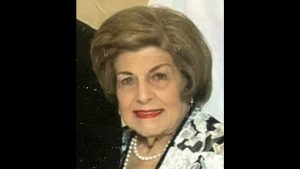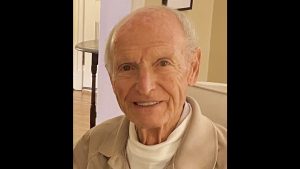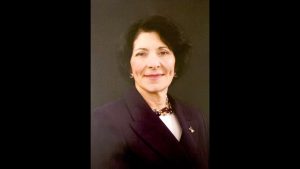My Uncle Frank: A tribute to a St. Louis Jewish WWII hero
Published June 1, 2017
Editor’s Note: Steven M. Friedman, a native of St. Louis, now a retired attorney living in Paradise Valley, Ariz., prepared this feature as a tribute to his late Uncle Frank Friedman, a Jewish American captain in the Army Air Corps during World War II, whose P-38 fighter plane was forced to land in a fresh water lake in the Aleutians, and was later part of General Douglas MacArthur’s occupation army in Japan.
“The morning sun brought clear skies to the western Aleutians on June 11, 1943. An all-out air offensive was launched against the occupying Japanese forces entrenched on the Island of Kiska. B-24 and B-25 bombers AND P-38 AND P-40 fighters were sortied to soften up the Japanese positions in preparation for an amphibious assault scheduled for mid-August 1943.”
Captain Frank Friedman, Army Air Corps, flying a P-38 fighter plane, led the last flight of four P038s that morning with Jim Duffy on his wing, Glenn Martin as element leaders and John Larson as “Tail End Charley.” Each P-38 was carrying two 500-pound bombs on the belly pylons and a full load of .50 caliber and 20 mm cannon ammo.
Sounds like the beginning of a World War II movie doesn’t it? The above two paragraphs are quoted from an article written by Dave Mahre, of Yakima, Wash., one of the brave people from Underwater Admiralty Sciences, who went looking for the P-38, which was piloted by my late Uncle Frank Friedman, a true hero of World War II whose personal modesty prevented him from ever boasting about his bravery under fire.
Appropriately, Frank Friedman was born in St. Louis on what was then called Decoration Day, and which is now called Memorial Day—a most fitting time to recall his service to the nation in the war fought by what Tom Brokaw calls the “Greatest Generation.” He died on July 2, 2015, just short of Independence Day. His obituary, published in the St. Louis media said that Frank was a “decorated war hero,” and indeed he was. I knew that my Uncle Frank had been flying a P-38, the “Lightening,” supposedly the hottest fighter with conventional engines that flew for the U.S. Air Force in World War II. The new F-35, currently being tested has been called “the New Lightning,” which reminded me of Uncle Frank’s defining moment in combat.
I already knew that Uncle Frank has once landed his P-38 in a lake, but I thought that he had been shot down in that plane. When I Googled “Frank Friedman P-38,” I learned that in that mission, he had been unable to return to his base because the weather had turned sour and he and his crew could not see the field.
Frank’s base was “socked in” as were the nearest alternative landing fields. There was no radar on the planes or on the ground They would either have to take a chance and guess where the base was—or fly until they ran out of fuel and crash if they could not find a suitable place to land. Frank chose to land on what was later called “Lake Friedman.”
Frank landed his P-38 in a fresh water lake on one of the Aleutian Islands. Planes that have sunk in fresh water have been recovered and restored, but that idea would come later.
Frank remembered vividly they day he splashed down on a small icy lake, swam ashore through almost freezing water. He got to a small island, which he described as “a rock sticking out of the water.” He stripped himself, tried to dry off himself and his clothes. He waited for the rescue team which landed on the island with a rubber boat to remove him safely from the island.
Years later, a non-profit organization called Underwater Admiralty Sciences, learned of Frank’s emergency landing in the lake and subsequent rescue and offered to search for, recover and restore the P-38. The team from the group included Dave Mahre, who I quoted in the first two paragraphs of this story. They offered Frank the chance to be the first to fly the plane if it could be safely rescued and recovered.
Frank was willing to help them and assisted them in the search for the “Friedman Lake” where the plane had come down. Unfortunately, the Air Corps destroyed the plane because the feared the Japanese might get to the lake and find the place.
By this time, Frank was in business as a wholesaler dealing in candy and cigarettes from his story on Easton Avenue in St. Louis (now Martin Luther King Avenue). Frank could have taken the role of the “dashing pilot” that we see in the first lines that begin this article. He was charming and handsome and always ready to party. He looked like William Powell in “The Thin Man” movies. At his 95th birthday party, which I attended in St. Louis, Frank was still the debonair, affable gentleman who had been known and loved by many St. Louisans whom he had met through his businesses. We also learned that Frank was a dancer and singer in community musicals, primarily at United Hebrew Congregation. There is another footnote to Frank’s remarkable record and life. When World War II ended in 1945, he was comfortable in the Army Air Corps, which later became the United States Air Force.
He was part of General Douglas MacArthur’s occupation army in Japan as they worked to move Japan from a militarist society toward a brighter future as a peaceful democracy. Frank attained the rank of major and would have continued as an Air Force leader. But tragedy struck the Friedman family.
Frank had met a beautiful girl name Norma (Pug) Taft, while on leave. They were in love and soon married and had two children, Perter and Kayla. He brought his wife and two very young children to live on the Air Force base north of Tokyo. One weekend, Pug decided to go into Tokyo. There she contracted bulbul polio, a virulent and quickly deadly form of the scourge that would later be all but eliminated by postwar medicine. The beautiful young woman and vital mother and wife was gone in a matter of hours.
Frank was then confronted with a terrible choice.
He was told that he had a great future with the Air Force. Another officer suggested that he seek to have the two young children adopted. The officer who made that suggestion was never again considered to be a friend.
Frank had no hesitation. He came back to St. Louis. It was tough at first. He and the two children stayed with his parents in the two-bedroom apartment on Eastgate in University City. Frank later worked for his cousin Ralph Friedman at the Friedman Railroad Salvage Co., and later opened his own business.
He later met his second wife, Ada Grosberg, who helped him raise his two children, Peter and Kayla. She later gave birth to Mitzi, which gave Peter and Kayla a sister whom they love.
Frank Friedman—a World War II hero on and off the field of battle—a survivor of key battles over and around the Aleutian Islands, and later a successful businessman, husband, father and a dancer and a showman.
As Memorial Day 2017 approaches, it is appropriate that we remember Frank Friedman with honor and respect.













